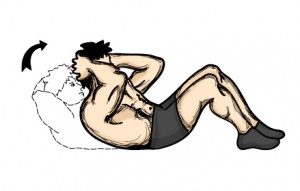
Clients often ask me how many times they should be doing an exercise to build strength. Often they are coming from a more-is-better place – the gym – and they are confused.
I don’t always feel comfortable answering that question, either. How many repetitions of an exercise are fine may well depend on what the point of the exercise is – strength? size? flexibility? What about function? If the muscle is a core muscle, does that change the formula as opposed to those muscles we like to see flexing in the mirror?
And what do I, as a massage therapist, really know about exercise? Do I need a course in physical exercise to answer that question? What if I say something different or conflicting from what the trainer says?
I would like to know how other massage therapists handle this question.
Of course, in the meantime, I’ll give you an idea of how I handle that question. I touch people all day, and I get a feel for muscle health in terms of its aerobic state, lymph circulation, and flexibility. Over the years I have learned to trust my hands when they tell me something. I know that granular, adhesed muscles won’t stretch or exercise very well.
After some massages and stretching, they may be ready to perform. The nervous system, truly, is in charge. If the parasympathetic system is not engaged, change is not about to take place.
If that sounds like a massage therapist’s answer to another massage therapist, it is. And it’s way too complicated for clients. I usually go simple and easy.
I tell clients like to do three slow, pain-free repetitions. Three isn’t many, but I say three because everyone ignores the slow, pain-free parts. If those reps go okay, then I’ll do something else and then do another set of three. Three reps, three sets.
That is a lot less than the standard gym advice of three sets of fifteen, done in succession. It’s so way off from what most people are told that it does get their attention.
For me the bottom line is that muscles need to be relaxed and pain-free to exercise in a healthy way. If something is too tight or hurts to move, the body will protect it by substituting another muscle or group, or the muscle will be injured. Repetitions that feel good generally are going to help. Wobbly, strained, borderline-painful repetitions are going to make problems worse.
Sometimes the biggest change I can get from people is to stop instead of pushing through a pain. Shoving through pain only works if you are in the NFL. They have a good pension plan.






As a personal trainer and a Massage therapist. Your method of 3 slow reps is good especially if you are new to exercise. And yes it is true, I laugh to myself when I hear the trainers in the gym counting 14, 15 now rest. With all there clients! The rule is if you are trying to put on size your reps are low and the weight is heavy, but that doesnt mean your suppose to be in pain and agony,lol. Like I see some people in the gym that cant even rep out the 3 rep with out help. Well they will be seeing us in a few weeks. For maintaining 12-15 reps depending on how you feel just like you mentioned. The most important thing is to listen to your body, if your not a bodybuilder or a professional athlete take it slow and be consistent. Age is also a factor and the clients past history with working out and sports activities. I prefer your answer to what i commonly hear in the gym. I enjoy your blogs 😉
Reply from Sue: I must say I agree wholeheartedly. I just had a client with an annulear tear who decided to go to the gym and do about 50 fast lunges. I’d like to have a video of that…